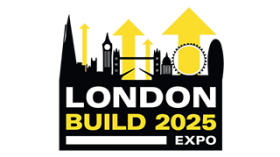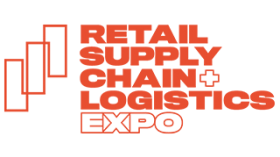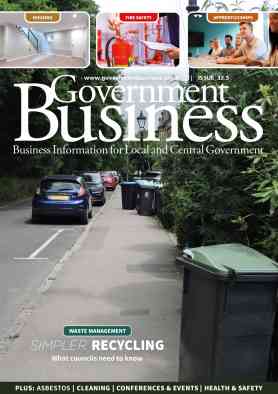Faced with increasing pressure to do more with less, all kinds of organisations are looking at ways to work smarter and local government is no exception.

Behind the scenes at the London's New Year's Eve fireworks display
Behind every dazzling burst of light at London's New Year's Eve fireworks display lies months of meticulous planning. Tom Smith, managing director at CarnDu, chairman of the EIG and secretary of the BPA, takes us behind the scenes of this world-famous event
The London fireworks for New Year’s eve, centred around the London Eye and also featuring fireworks from barges on the River Thames is considered to be one of the most spectacular shows from around the world to celebrate the coming of a new year. The event, which is produced by Identity and fired by Titanium Fireworks doesn’t just “happen”. Almost immediately after the previous New Year display, planning starts on the next one – what may change, what lessons learned etc.
This article concentrates on the behind the scenes work that goes on to ensure the fireworks element of the overall production is safe and environmentally sound. CarnDu Ltd have worked on the event since the Millennium show in 1999 and we are probably the longest running part of the event team which gives us unique insight into the potential issues surrounding the display.
Weather
One of the factors we have to consider is the effect of wind – it’s direction and strength. Rain is not pleasant for either the event crews or the public – but in fact has very little bearing on the show. Visualising where the debris and fallout from firework displays land has always been important to show designers and the crew firing the display. In the past, this has been rather reliant on experience on site as the most important determinant as to whether to modify, curtail or cancel a fireworks display.
However, in recent years this has been formalised to ensure that prior to a show, the senior firer must have an understanding of the venue and the “most likely” prevailing conditions and the “worst case” conditions. A contingency plan is developed so that objective decisions may be made and that the decisions can be fully supported by the display company, the production team and the client and it is also increasingly important to be able to demonstrate before the event occurs.
Technology
ShellCalc© was originally developed in Australia by John Harradine, Australian Inspector of Explosives, and in the years since the original publication appeared in the Journal of Pyrotechnics there have been many developments both in the program itself, and in its application.
This was the first time any method had been available to model shell and comet trajectories.
We have modified and extended the program over many years – the number of input parameters has been extended and includes: up to five firing points each independently entered by x/y/z co-ordinates; the ability to model shells, bombette candles, gerbs and mines; and the ability to fire at a greater range or angles including below horizontal (for firing comets off structures like the London Eye).
The program now displays a variety of information including: ‘blind’ shell distance; shell burst diameter; ‘normal’ fallout distances for expected debris; ‘long burn’ fallout distances for long burning effects; sound parameters at ground level; and ‘high level’ and ‘low level’ smoke distribution.
Wind prediction and development of curtailment plans is therefore a necessary part of the preparations for any display, as well as monitoring directly (using anemometers) or indirectly (using local forecasting). We use a variety of local sources, and for major events we generally plot predicted wind strength and direction as shown below using WindCalc© – another of the tools we have developed.
It is vital to know what the “most likely” and “worst case” scenarios are for the location. For London historical wind information is invaluable (see above).
We have collated data ourselves over many years and also rely on information from the Met Office and other weather sources.
The following wind rose shows the most likely conditions are SW->W winds up to 12kts.
Smoke, debris and fallout
For the NYE display, an Easterly wind is the “worst case” in so much as it would blow smoke and debris towards the Embankment side of the river, where the paying public are located. A small amount of smoke is generally acceptable (and actually the crowd love it) but from a broadcast media point of view, it obscures the London Eye.
Consideration of where debris and fallout may land then allows the fireworks contractor to change the firing angles of the fireworks to minimise the fallout area, selectively remove material from the display, and have objective criteria for even cancellation.
We model wind from eight directions (N, NE, E etc) and four wind strengths (up to Force 4 – the “A” show, Force 5, Force 6 and Force 7) and hence provide an objective assessment of what should be done under any of these conditions.
We also have developed two other programs to quantify environmental effects and noise.
The first is EnvCalc©, an environmental calculator and modelling software, and the other SoundCalc©, for calculating and displaying sound measurement contour values on maps.
EnvCalc© has been developed by us to quantify the environmental impact of displays following several very high-profile events when the anti-firework lobby has been vocal in condemning firework displays as highly polluting. The calculator considers the chemical by-products of combustion and their environmental impact; the use of the tool to calculate the amount of combustion by-products released; comparison with other event aspects such as travel of the crowd to the display, importation and transport of fireworks, display equivalence in terms of power generation, use of drones etc. and the plotting of simple smoke plume.
Environmental impact
The London NYE 2024 display is a major event but its environmental impact is minimal. In only one case in the last 20 years of the display has there been concern about
the smoke from the show – when there was a very light easterly wind, and this was predominantly from the media outlets who had positioned themselves downwind of the firing positions.
The important features of the analysis are as follows.
In terms of carbon emissions, the releases from the display are approximately 1/790th of that produced by the spectators coming to the display. For NOx this equivalence is approximately 1/60th and for No SO2 this equivalence is about 1/270th.
This equates to the carbon emissions from the display being approximately 2500km miles driven in a typical internal combustion car.
The carbon emissions are approximately equivalent to the production of 139 Big Macs™.
A single 60kVA generator would need to run approximately 500 minutes to be equivalent to the carbon emissions.
The amount of CO2 produced by the audience for the duration of the display itself is approximately 7.5 times that produced by the display.
Overall, therefore, we consider the impact of the display to be minimal.
Conclusions
Increasing concern about the safety and environmental effects of fireworks and pyrotechnics has meant that display companies must consider all these aspects in planning and executing displays whether they be indoors or outdoors. ShellCalc©, EnvCalc© and SoundCalc© allow planning pre-display, particularly to produce contingency plans, and to demonstrate at the display site the effects of, in particular, wind changes to help maximise safety.
For London NYE 2024, there were minor changes to the display which in no way affected the spectacle or the enjoyment by the public and those watching on TV.
Display planning, especially for high profile events like London NYE, is not as ad hoc as some might think. Careful planning and objective decision making using established scientifically vigorous tools ensure that the event is most likely to proceed even in adverse conditions.
For more information on the tools we have developed see www.carndu.com or contact us at tools@carndu.com
Event Diary
Join us for the landmark 10th Anniversary of the London Build Expo, the UK’s largest and most influential construction and design show.
Retail Supply Chain & Logistics Expo returns to Excel London across 12-13 November, once again bringing together the world of logistics, supply chain, eCommerce and retail innovation for two dynamic days of opportunity.
Every sport, from grassroots football to world-class tournaments, depends on one constant: high-quality playing surfaces and well-maintained green spaces.
Supplier Profiles
Bauder Accepts Keys to its New UK Distribution Centre at Gateway 14
Bauder marked a major milestone in its UK expansion with the official handover of a brand
Words of World: Bridging language barriers with excellence
At Words of World, we specialise in professional translation and interpreting, d
Latest Features
The British Institute of Cleaning Science (BICSc) and the Cleaning & Support Services Association (CSSA) have successfully completed a groundbreaking project aimed at exploring the future of cleaning. This collaboration marks a significant milestone in the cleaning industry, reflecting a shared commitment to embracing innovation with confidence.
The Crown Commercial Service’s (CCS) new framework on Language Services (RM6302), dealing with translation, transcription and interpreting, is live, running from 7th May 2025 to 6th May 2028.










